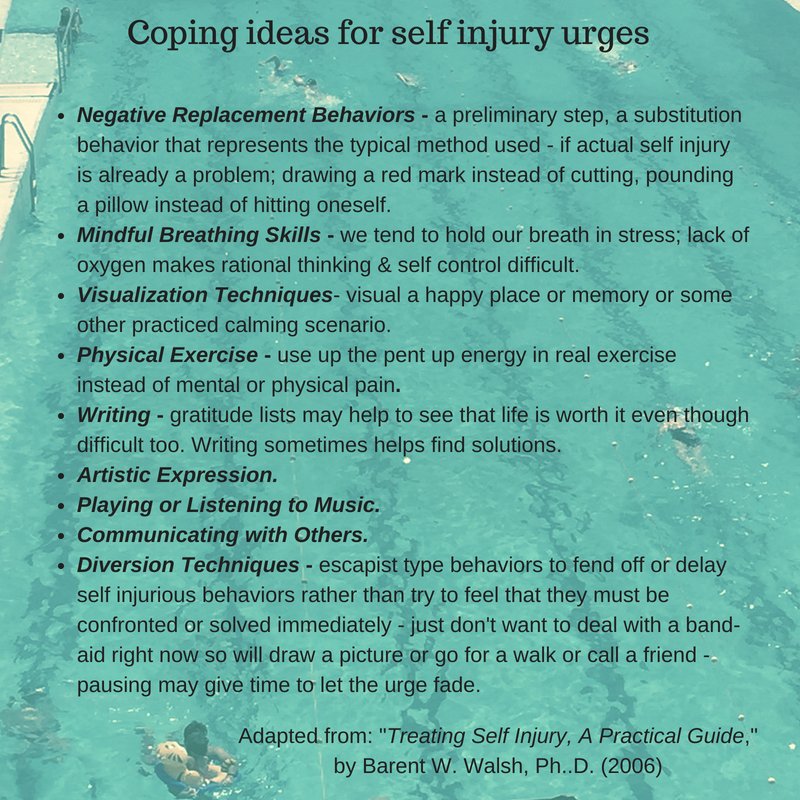Update, 8/18/2018, for anyone interested in phytonutrient biochemistry or herbal medicinal foods: Wintergreen and wintergreen berries are also a natural source of a painkiller in the NSAID group – aspirin. The plant can also be a source of phytonutrients that activate TRPA1 channels which can affect fluid balance and other symptoms. Winterberries are in the cranberry family and have a minty flavor. They are in season currently and eating more of them seems to increase my symptoms of inflammation and swelling more than the pomegranate extract or pomegranate seeds. Having too many variables in an experiment makes it unclear which factor might be a cause or if both may be involved. Experimental method tries to narrow variables to one factor at a time. Stopping both pomegranate products and wintergreen berries helped but other symptoms got worse, adding pomegranate back to my diet didn’t make the inflammation/swelling symptoms much different but more recently adding the wintergreen berries back into my diet did make the symptoms of lower leg inflammation/swelling and pain worse.
An excerpt from one of my other websites, G3.6.1.5: People with overactive TRPA1 channels may be sensitive to:
- “(Winter-green),” (G3.67); Wintergreen is a natural flavoring herb in the mint family. It is typically used as an essential oil as a flavoring in many foods and other types of products. It has medicinal benefits related to it containing the chemical that acts as the pain killing ingredient of aspirin.(G3.73) (effectivecare.info, G3)

My ongoing self study of pomegranate extract for my mental and physical health symptoms has led me to use a fairly small dose, daily though is still best. Missing even a few days seems to increase mood and anxiety problems but using a very large serving has some side effects. Lower leg and foot swelling is associated with some physical health problems but it can also be a side effect of NSAIDs pain killers such as ibuprofen. (7) Pomegranate extract has been shown to reduce pain and inflammation by the same mechanism as NSAIDS – inhibition of cyclooxygenase enzymes (COX1 and COX2, with more inhibition of COX2 than COX1). It also may have an anti-inflammatory effect by reducing inflammatory cytokines that signal increase in production of Nitric Oxide (NO) and Prostaglandin E2 (PGE2). (1) Prostaglandin E2 is made from arachidonic acid and is involved in the inflammation associated with rheumatoid arthritis and osteoarthritis. (2) Nitric oxide can be beneficial but it can also transform into reactive oxidative species and add to the antioxidant burden of metabolism. (5) (9) Other studies including an animal study on obesity found pomegranate extract reduced inflammatory biomarkers and increased nitric oxide, which might make it helpful for Metabolic Syndrome. (6)
Pomegranate extract was found helpful in a dose related level against mammary tumerogenesis in an animal study, (0.2-5 gram/Kg body weight was used). Reducing COX2, heat shock protein 90 (HSP90), nuclear factor-κB (NF-κB) pathways, and increasing Nrf2 pathways were found to be part of the mechanism for benefit. (4) That amount could be quite a lot. Equivalent amounts for a 75 kilogram/165 pound human would be 15-375 grams per day or roughly one tablespoon (15 grams approximately)-13.4 ounces/27 tablespoons per day. (Mammary tumerogenesis means the initial onset of breast cancer tumors.)
It helps to prop my feet when sitting or even lay down with my feet above my heart. I’m getting better at typing while laying down. Better mood and having feeling in my fingertips is worth it. There may some other health or diet issues affecting the leg swelling. Heart or kidney or vein problems can be a cause. (7) I do have vein problems and may have heart issues, which can be an increased risk with hyperthyroidism. Cutting back on salt, daily exercise, and elevating the lower legs above the level of the heart several times per day for a half an hour is recommended, wearing compression socks is also a recommendation and that makes me feel old. (7) Maybe 52 is old.
Lymphedema – lower leg swelling due to reduced drainage from vein problems may be the best fit for my personal history, and lack of stretching exercises lately may be part of the reason the problem has become worse lately. Physical therapists explain the problem and provide exercise, massage and compression wrapping suggestions in a free video available online. (8) The exercise routine is similar to what I generally do when I do stretching exercises – so that seems like a good habit to return to my daily schedule.
Lower leg swelling has been a symptom for me at various stages of previous ill health and with some other medications I’ve used in the past, but currently it does seem worse when I use larger amounts of the pomegranate extract. One teaspoon a day helps with the stable mood and I haven’t had numbness in my fingertips in months with the ongoing daily use of pomegranate extract in larger amounts, 2-3 tablespoons was typical. I stopped use of it altogether when the leg swelling became a problem to see if the swelling would get better but the mood symptoms got worse again after having seemed fine for quite a while – quite a while while using pomegranate extract daily and the leg swelling didn’t get a lot better. Being not well is unpleasant and some side effects can be better than being unwell.
Breast cancer treatments currently may cause hair loss, severe vomiting and may leave the patient with cognitive decline afterwards, and pomegranate extract doesn’t cause any of those symptoms in the amounts that I’ve tried. It is a diuretic and causes increased urination which I cope with by drinking extra fluids and using the pomegranate extract early in the day rather than at night. I may be preventing breast cancer tumor development (4) while drinking extra fluid and urinating in increased amounts – getting old isn’t great but the alternative isn’t better. I may go buy my first pair of compression socks and feel young at heart if not in body.
Industry math – one pomegranate peel makes about six cups of extract by my method which would provide 288 teaspoons/96 tablespoons. It may have improved somewhat but the worsening in mood was more obvious. From an industry perspective getting 288 servings of a mood and nerve treatment from one pomegranate peel seems like it could be profitable. Dehydrating one teaspoon into a capsule serving also seems possible. Side effects with psychiatric medications are unfortunately common and can include swelling/edema of the lower legs or more severe edema including facial edema.
/Disclaimer: This information is provided for educational purposes within the guidelines of fair use. While I am a Registered Dietitian this information is not intended to provide individual health guidance. Please see a health professional for individual health care purposes./
- Shukla, Meenakshi & Gupta, Kalpana & Rasheed, Zafar & A Khan, Khursheed & Haqqi, Tariq. (2008). Bioavailable constituents/metabolites of pomegranate (Punica granatum L) preferentially inhibit COX-II activity ex vivo and IL-1beta-induced PGE2 production in human chondrocytes in vitro. Journal of inflammation (London, England). 5. 9. 10.1186/1476-9255-5-9.
- Jean Y. Park, Michael H. Pillinger, Steven B. Abramson, Prostaglandin E2 synthesis and secretion: The role of PGE2 synthases, Clinical Immunology, Vol 119, Iss 3, 2006, pp 229-240, ISSN 1521-6616, https://doi.org/10.1016/j.clim.2006.01.016.
https://www.sciencedirect.com/science/article/pii/S1521661606000453 (2) - Arachidonic Acid – an overview, ScienceDirect, https://www.sciencedirect.com/topics/neuroscience/arachidonic-acid (3)
- Mandal A, Bhatia D, Bishayee A. Anti-Inflammatory Mechanism Involved in Pomegranate-Mediated Prevention of Breast Cancer: the Role of NF-κB and Nrf2 Signaling Pathways. Nutrients. 2017;9(5):436. doi:10.3390/nu9050436. https://www.ncbi.nlm.nih.gov/pmc/articles/PMC5452166/ (4) From Abstract: “Mammary tumor samples were harvested from our previous chemopreventive study in which PE (0.2–5.0 g/kg) was found to reduce mammary tumorigenesis in a dose-dependent manner. The expressions of COX-2, HSP90, NF-κB, inhibitory κBα (IκBα) and Nrf2 were detected by immunohistochemical techniques. PE decreased the expression of COX-2 and HSP90, prevented the degradation of IκBα, hindered the translocation of NF-κB from cytosol to nucleus and increased the expression and nuclear translocation of Nrf2 during DMBA-induced mammary tumorigenesis.” From Introduction:”During the last decade, pomegranate fruit has been gaining a widespread reputation as a dietary supplement as well as a functional food due to emerging scientific evidence on potential health benefits, including prevention and/or treatment of cardiovascular ailments, neurological disorders, oncologic diseases, dental problems, inflammation, ulcer, arthritis, microbial infection, obesity, diabetes, acquired immune deficiency syndrome and erectile dysfunction [4,5,6,7,8,9]. Pomegranate fruit contains phytochemicals, including flavonoids (e.g., anthocyanins and catechins), flavonols (e.g., kaempferol and quercetin), flavones (e.g., apigenin and luteolin), conjugated fatty acids, hydrolyzable tannins and related compounds which are thought to be responsible for various biological and pharmacological activities [4,10,11,12,13,14]. Based on preclinical and clinical studies conducted by various laboratories worldwide, pomegranate-derived substances, such as juice, extracts and phytoconstituents exhibited cancer preventive and therapeutic effects against colon, liver, lung, prostate and skin cancer [4,15,16,17,18]. Various extracts, fractions and phytochemicals from pomegranate fruit, peel, seed and flower demonstrated cytotoxic, antiproliferative, proapoptotic, antiangiogenic, anti-invasive, and antimetastatic properties against estrogen receptor-positive and ‑negative breast cancer cells [19,20,21,22,23,24,25,26,27,28,29,30,31,32]” (4)
- Matsubara K, Higaki T, Matsubara Y, Nawa A. Nitric Oxide and Reactive Oxygen Species in the Pathogenesis of Preeclampsia. Miller FJ, ed. International Journal of Molecular Sciences. 2015;16(3):4600-4614. doi:10.3390/ijms16034600. https://www.ncbi.nlm.nih.gov/pmc/articles/PMC4394437/ (5)
- Filomena de Nigris, Maria Luisa Balestrieri, Sharon Williams-Ignarro, Francesco P. D’Armiento, Carmela Fiorito, Louis J. Ignarro, Claudio Napoli,
The influence of pomegranate fruit extract in comparison to regular pomegranate juice and seed oil on nitric oxide and arterial function in obese Zucker rats, Nitric Oxide, Volume 17, Issue 1, 2007, pp 50-54, ISSN 1089-8603, https://doi.org/10.1016/j.niox.2007.04.005.
(http://www.sciencedirect.com/science/article/pii/S1089860307000432) (6) - Swollen Legs: Causes and Treatments, WebMD, https://www.webmd.com/dvt/why-legs-puffy#1 (7)
-
Bob Schrupp, Brad Heineck, 10 Exercises for Leg Lymphedema (Swelling or Edema of the Lower Extremities). physicaltherapyvideo, https://www.youtube.com/watch?v=3t8Kp99e50k&feature=youtu.be (8)
- Aouache R, Biquard L, Vaiman D, Miralles F. Oxidative Stress in Preeclampsia and Placental Diseases. International Journal of Molecular Sciences. 2018;19(5):1496. doi:10.3390/ijms19051496. https://www.ncbi.nlm.nih.gov/pmc/articles/PMC5983711/ (9)

